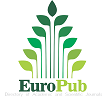Emotional regulation in adolescents
importance and influence of context
Abstract
The aim of this article is to present the characteristics of emotional regulation in adolescents according to biological and social aspects, with emphasis on the role of context and its influence on the process of emotional management. A bibliographic review was conducted in the Scopus, Science Direct and EBSCO Host databases, it was considered articles published between years 2011 and 2021 with the terms emotional regulation, adolescents, natural environments, context; as well as bibliographic material related to development and adolescence with earlier dates. It was found that developmental changes, in addition to the contextual factors of social pressures, parenting experiences and the perception of lack of control over situations help to understand how adolescents regulate their emotions and the difficulties they may present in the process. The scope of the findings are related to the personalist principles of solidarity-subsidiarity and freedom-responsibility. It is hoped that this information will be useful for the work of accompanying parents and educators in the process of acquiring or strengthening emotional skills in adolescents.
Downloads
References
Berbena, M., Sierra, M., & Vivero, M. (2008). Inteligencia emocional y habilidades sociales en adolescentes con alta aceptación social. Electronic Journal of research in educational Psychology,6(15), 319-338. https://bit.ly/3Wqt057
Blair, C., & Raver, C. (2016). Poverty, stress, and brain development: New directions for prevention and intervention. Academic pediatrics, 16(3), S30-S36. https://doi.org/10.1016/j.acap.2016.01.010
Blumenthal, H., Taylor, D., Cloutier R., Baxley, C., & Lasslett, H. (2019). The links between social anxiety disorder, insomnia symptoms,and alcohol use disorders: Findings from a large sample of adolescents in the United States. Behavior Therapy, 50, 50-59. https://doi.org/ 10.1016/j.beth.2018.03.010
Brito, N., & Noble, K. (2014). Socioeconomic status and structural brain development. Frontiers in Neuroscience, 8, 276. https://doi.org/10.3389/fnins.2014.00276
Campos, J. J., Walle, E., Dahl, A., & Main, A. (2011). Reconceptualizing emotion regulation. Emotion Review, 3, 26-35. https://doi.org/10.1177/1754073910380975.
Casey, B. (2015). Beyond simple models of self-control to circuit-based accounts of adolescent behavior. Annual Review of Psychology, 66, 295-319. https://doi.org/10.1146/annurev-psych-010814-015156
Cid, M.T. (2014). Sociedad, familia y escuela: el reto de educar. CEU ediciones.
Coley, R. L., Lynch, A. D., & Kull, M. (2015). Early exposure to environmental chaos and children's physical and mental health. Early Childhood Research Quarterly, 32, 94-104. https://doi.org/10.1016/j.ecresq.2015.03.001
Corbal, J. A. (2021). Modelos de racionalidad. Apuntes de Bioética, 4(2), 73-97. https://doi.org/10.35383/apuntes.v4i2.665
De France, K., & Hollenstein, T. (2022). Emotion regulation strategy Use and success during adolescence: Assessing the role of context. Journal of Research on Adolescence, 32(2), 720-736. https://doi.org/10.1111/jora.12672
Departamento Administrativo Nacional de Estadística. (2021). Salud Mental en Colombia: un análisis de los efectos de la pandemia. https://bit.ly/3Dg5lNJ
Fredrickson, B. (1998). What good are positive emotions? Review of General Psychology, 2, 300-319. https://doi.org/10.1037/1089-2680.2.3.300
García, J. J. (2013). Bioética personalista y bioética principialista. Perspectivas. Cuadernos de Bioética, 24(1), 67-76. https://bit.ly/2QGX8Yy
Giuliani, M. F., Posada, F. V., Arias, C. J., & Serrat, R. (2015). Development and structural validation of a scale to assess regulation of anger and sadness in interpersonal situations. Anuario de Psicología/The UB Journal of Psychology, 45(1), 115-130. https://bit.ly/3WoDVfn
Gómez, M. P., Diaz, N. R., & Osorio, S. H. (2016). Valoración de parámetros inmunitarios tras un programa integrado de Inteligencia Emocional y Mindfulness: un estudio piloto. Cuadernos de Medicina Psicosomática y Psiquiatría de Enlace, 118, 25-35. https://bit.ly/3I3B1ZjGratz, K., & Roemer, L. (2004). Multidimensional assessment of emotion regulation and dysregulation: Development, factor structure and initial validation of the difficulties in emotion regulation scale. Journal of Psychopathology Behavioral Assessment, 26, 41-54. https://doi.org/10.1023/B:JOBA.0000007455.08539.94
Gross, J. J. (1998). Antecedent- and response-focused emotion regulation: divergent consequences for experience, expression, and physiology. Journal of Personality and social Psychology, 74, 224–237. https://doi.org/10.1037/0022-3514.74.1.224
Gross, J. J. (dir.) (2014). Handbook of emotion regulation. Nueva York: Guilford.
Gross, J. J., & John, O. P. (2003). Individual differences in two emotion regulation processes: implications for affect, relationships, and well-being. Journal of Personality and Social Psychology, 85, 348–362. https://doi.org/10.1037/0022-3514.85.2.348
Johnsen, S. Å. K., & Rydstedt, L. W. (2013). Active use of the natural environment for emotion regulation. Europe’s Journal of Psychology, 9(4), 798-819 https://doi.org/10.5964/ejop.v9i4.633
Korpela, K. M., Stengård, E., & Jussila, P. (2016). Nature walks as a part of therapeutic intervention for depression. Ecopsychology, 8(1), 8-15. https://doi.org/10.1089/eco.2015.0070
Maestros. Publicación de la Facultad de Ciencias Humanas y Sociales, 352, 34-39. https://bit.ly/3FVo1CuMartin, R., & Ochsner, K. (2016). The neuroscience of emotion regulation development: Implications for education. Current Opinion in Behavioral Sciences, 10, 142-148. https://doi.org/10.1016/j.cobeha.2016.06.006
Martínez-García, R. & De Valenzuela, Á. (2018). El ocio en la naturaleza como experiencia socioeducativa en el desarrollo integral de los jóvenes desfavorecidos socialmente. Revista de Educación y Desarrollo, 45. https://bit.ly/3PVEdbpMinisterio de Salud y Protección Social, Colciencias, & Pontificia Universidad Javeriana (2015). Encuesta Nacional de Salud Mental. Colombia. https://bit.ly/3PSlZHIOliva, A., & Antolín, L. (2010). Cambios en el cerebro adolescente y conductas agresivas y de asunción de riesgos. Estudios de Psicología, 31(1), 53-66. https://bit.ly/3jxKXAc
Pacheco, N., & Fernández, P. (2013). Inteligencia emocional en adolescentes. Padres Y Maestros / Journal of Parents and Teachers, (352), 34-39. https://bit.ly/3FYBiKkPeñacoba, A. & Santa Cruz-Vera, D. (2016). El declive de la educación de la voluntad: problemática y tendencias educativas. Educación y Educadores, 19(3), 7. https://doi.org/10.5294/edu.2016.19.3.7
Peñacoba (2022). Educar la libertad, un puente entre la indigencia del hombre y su posibilidad de plenitud en Millán-Puelles. Estudios sobre Educación, 42, 129 - 145 https://doi.org/10.15581/004.42.006
Pérez, M., Almirall, P., & Pérez, A. (2015). La variabilidad de la frecuencia cardíaca, un incuestionable indicador de la unidad biopsicosocial. Investigaciones Medicoquirúrgicas, 7(2), 292-312. https://bit.ly/3jtpTL1
Richardson, M., McEwan, K., Maratos, F., & Sheffield, D. (2016). Joy and calm: How an evolutionary functional model of affect regulation informs positive emotions in nature. Evolutionary Psychological Science, 2, 308–320. https://bit.ly/3jp0IsVSagardoy, R. C., Solórzano, G., Morales, C., Kassem, M. S., Codesal, R., Blanco, A., & Morales, L. (2014). Procesamiento emocional en pacientes TCA adultas vs. adolescentes. Reconocimiento y regulación emocional. Clínica y Salud, 25(1), 19-37. https://doi.org/10.5093/cl2014a1
Salonen, K. J., Hyvönen, K., Paakkolanvaara, J. V., & Korpela, K. M. (2022). Flow with Nature treatment for depression: Participants' experiences. Frontiers in Psychology, 6254. https://doi.org/10.3389/fpsyg.2021.768372
Santa Cruz-Vera, D.; Bolívar, M., Tobón, L., & Ortiz, S. (2021). Mujer y bioética. Experiencias y sugerencias educativas. Apuntes de Bioética, 4(2), 5-23. https://doi.org/10.35383/apuntes.v4i2.679
Shaffer, D. & Kipp, K. (2007). Psicología del desarrollo: infancia y adolescencia. México: Thompson.
Silk, J. S., Steinberg, L., & Morris, A. S. (2003). Adolescents’ emotion regulation in daily life: Links to depressive symptoms and problem behavior. Child Development, 74(6), 1869–1880. https://doi.org/10. 1046/j.1467-8624.2003.00643.x
Silvers, J. A., Shu, J., Hubbard, A. D., Weber, J., & Ochsner, K. N. (2015). Concurrent and lasting effects of emotion regulation on amygdala response in adolescence and young adulthood. Developmental Science, 18(5), 771-784. https://doi.org/10.1111/desc.12260
Stegge, H., & Terwogt, M. M. (2007). Awareness and regulation of emotion in typical and atypical development. En J. J. Gross (Ed.), Handbook of emotion regulation (pp. 269–286). The Guilford Press.
Stephanou, K., Davey, C. G., Kerestes, R., Whittle, S., Pujol, J., Yücel, M., ... & Harrison, B. J. (2016). Brain functional correlates of emotion regulation across adolescence and young adulthood. Human Brain Mapping, 37(1), 7-19. https://doi.org/10.1002/hbm.22905
Susman, E. J., & Rogol, A. (2009). Puberty and psychological development. In R. Lerner & L. Steinberg (Eds.). Handbook of Adolescent Psychology. New Jersey: John Wiley & Sons.
Tamnes, C. K., Walhovd, K. B., Grydeland, H., Holland, D., Østby, Y., Dale, A. M., & Fjell, A. M. (2013). Longitudinal working memory development is related to structural maturation of frontal and parietal cortices. Journal of Cognitive Neuroscience, 25(10), 1611-1623. https://doi.org/10.1162/jocn_a_00434
Zelazo, P. D. (2020). Executive Function and Psychopathology: A Neurodevelopmental Perspective. Annual Review of Clinical Psychology, 16, 431-454. https://doi.org/10.1146/annurev-clinpsy-072319-024242
The authors retain copyright.
This work is under international license Creative Commons Attribution 4.0.
The articles published by the scientific journal "Notes on Bioethics" of the Universidad Catolica Santo Toribio de Mogrovejo, Chiclayo Peru, can be shared through the international public license Creative Commons Attribution CC BY 4.0
























 LIBRARY USAT
LIBRARY USAT